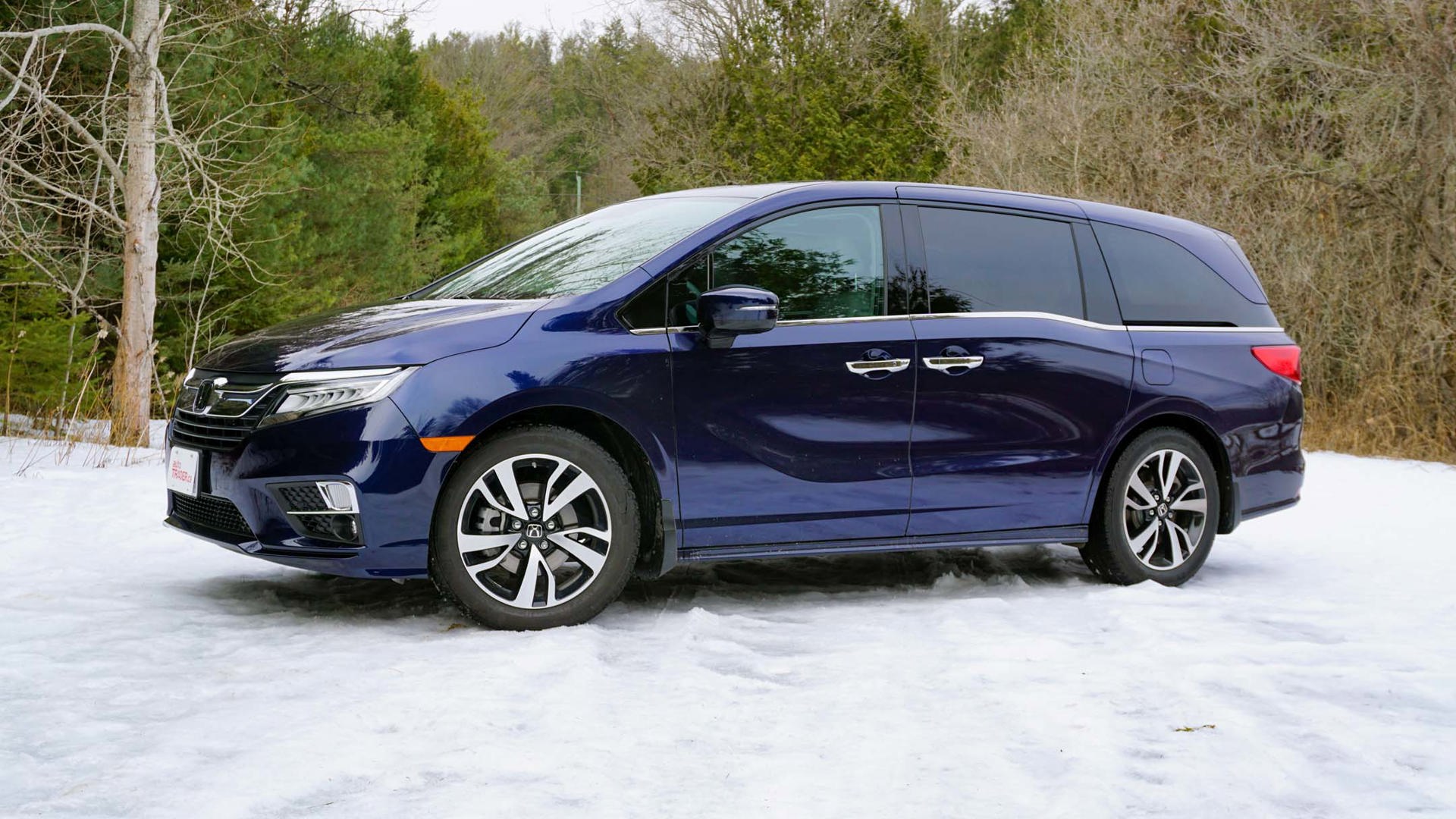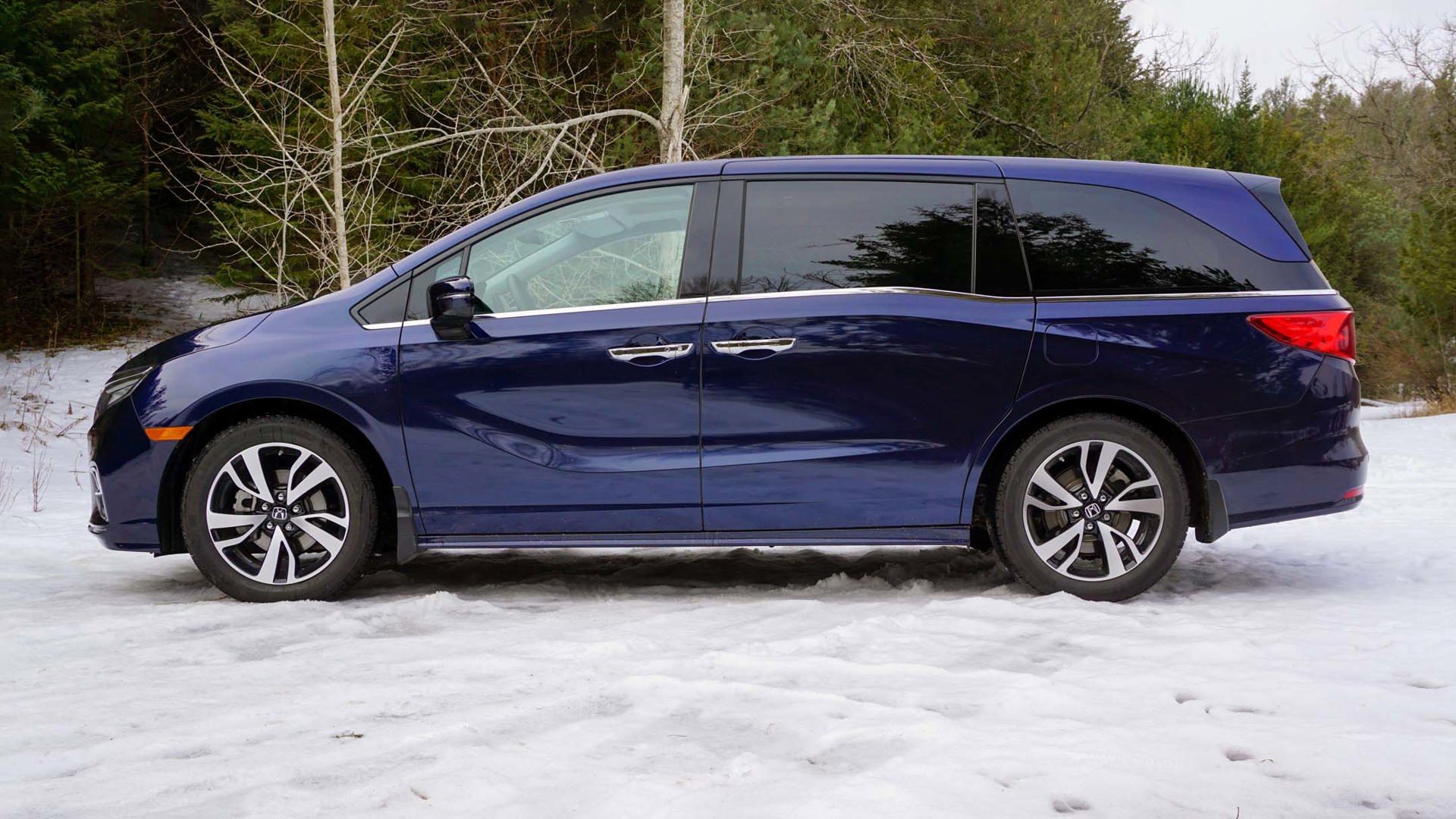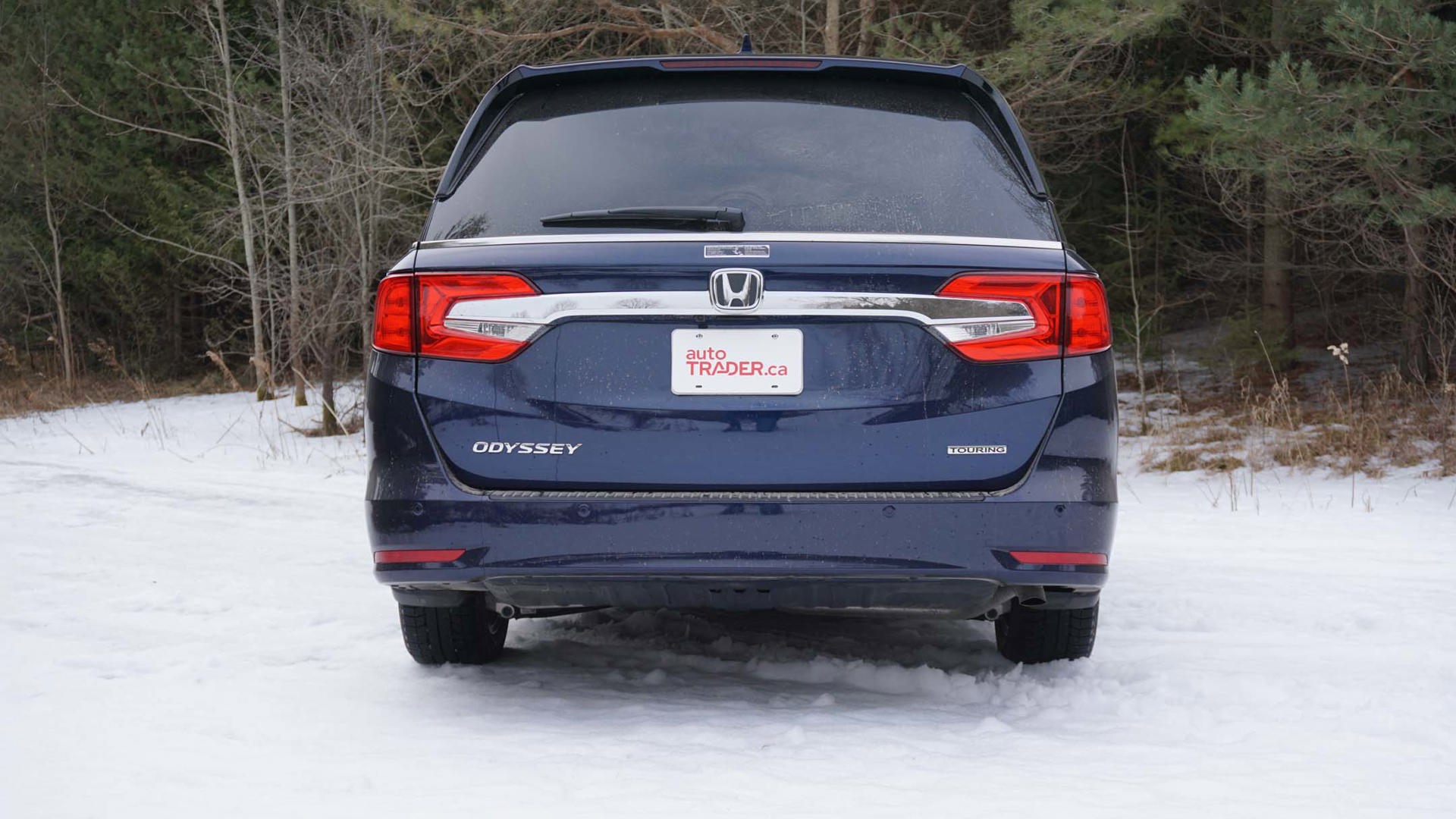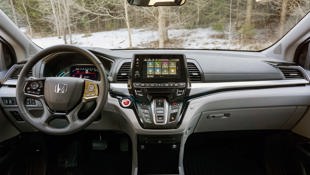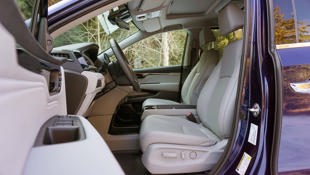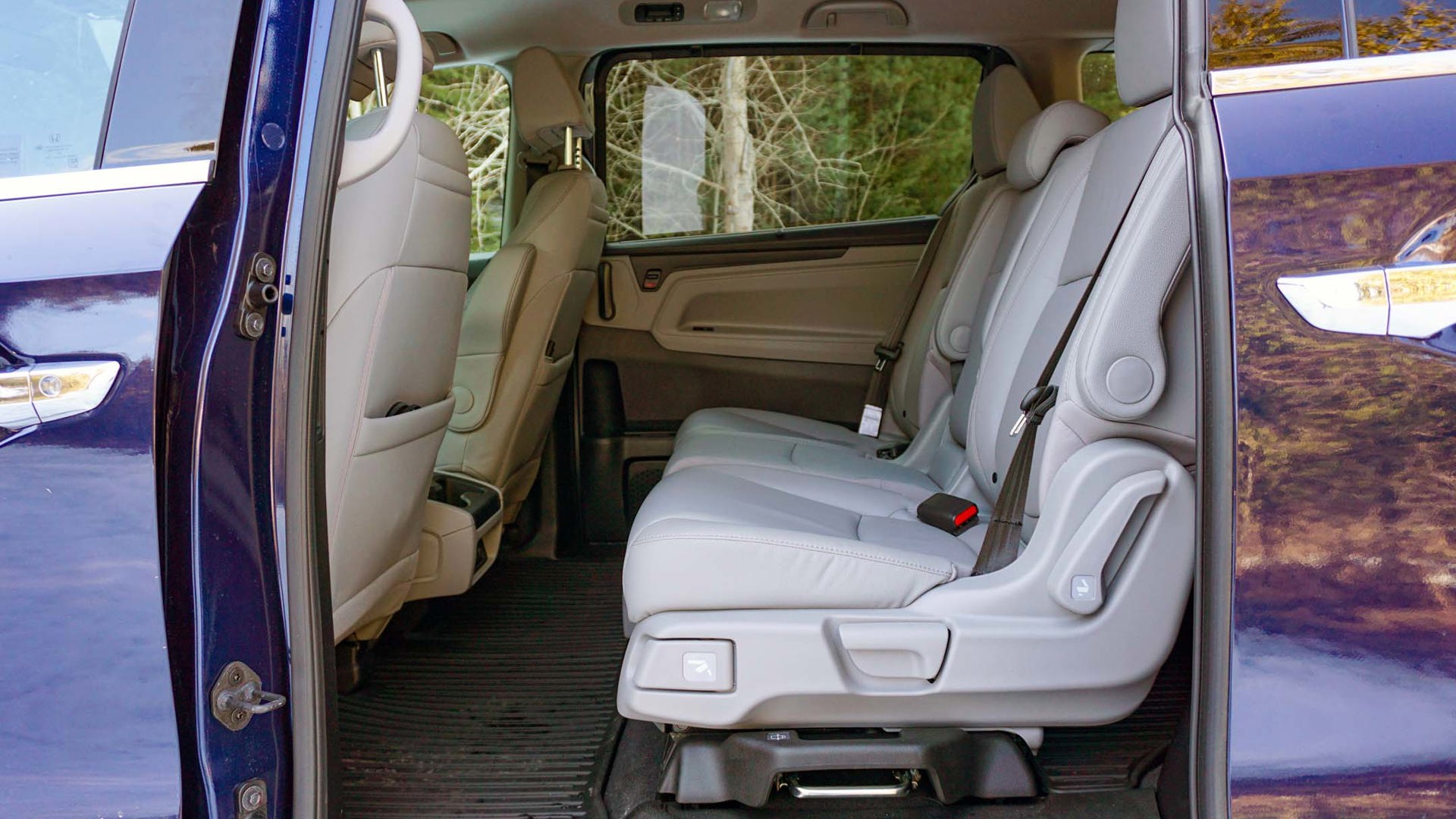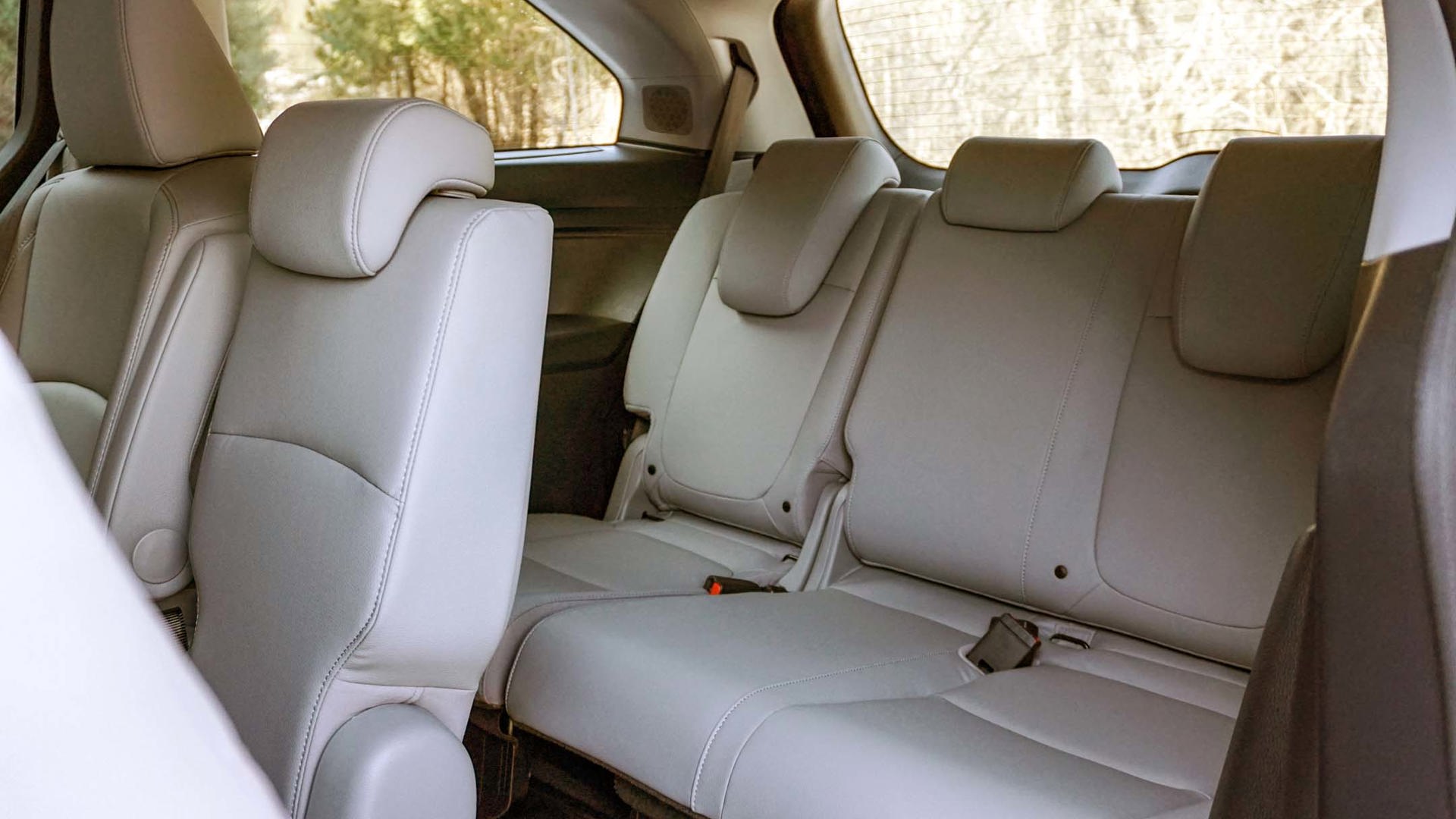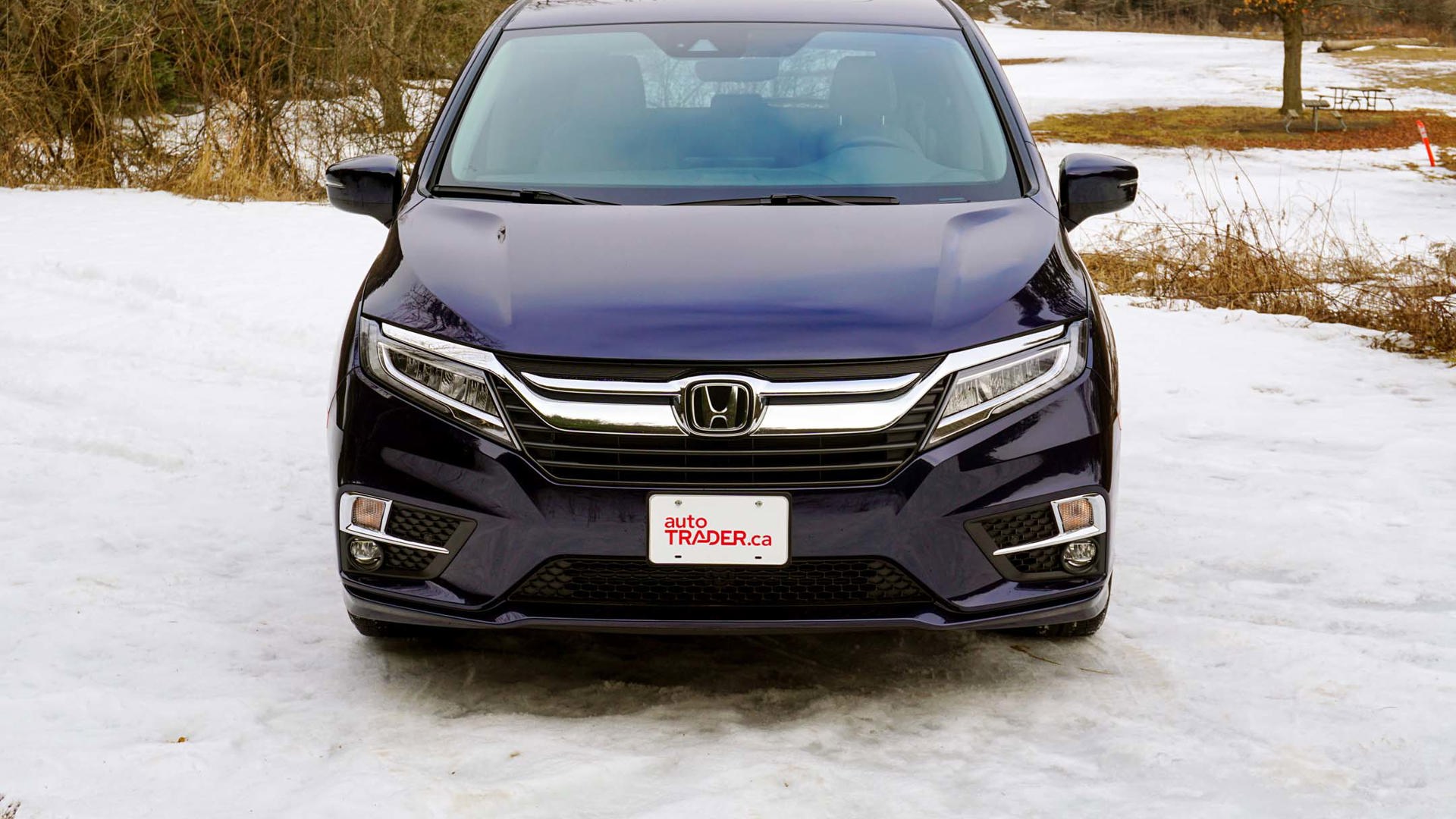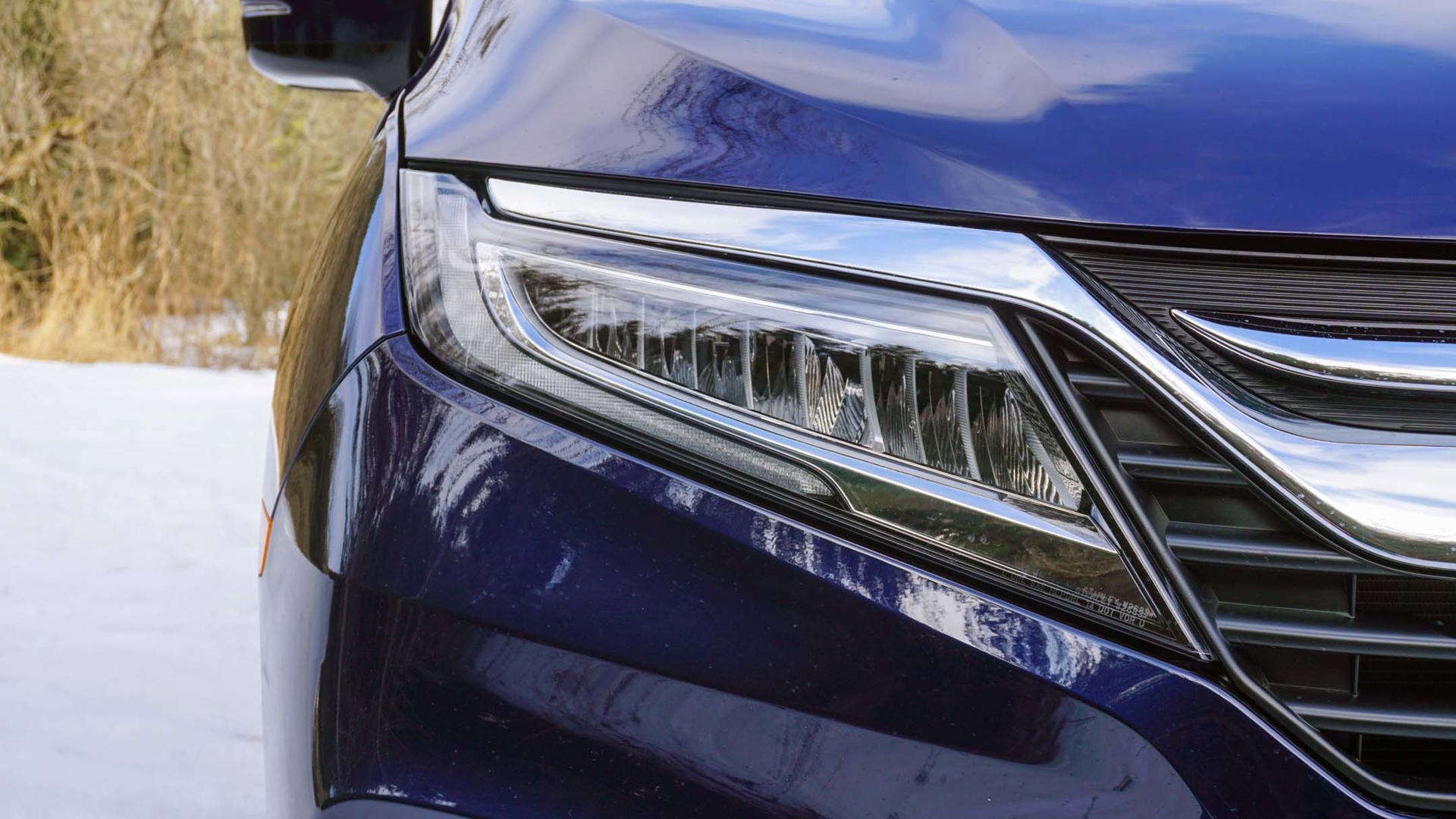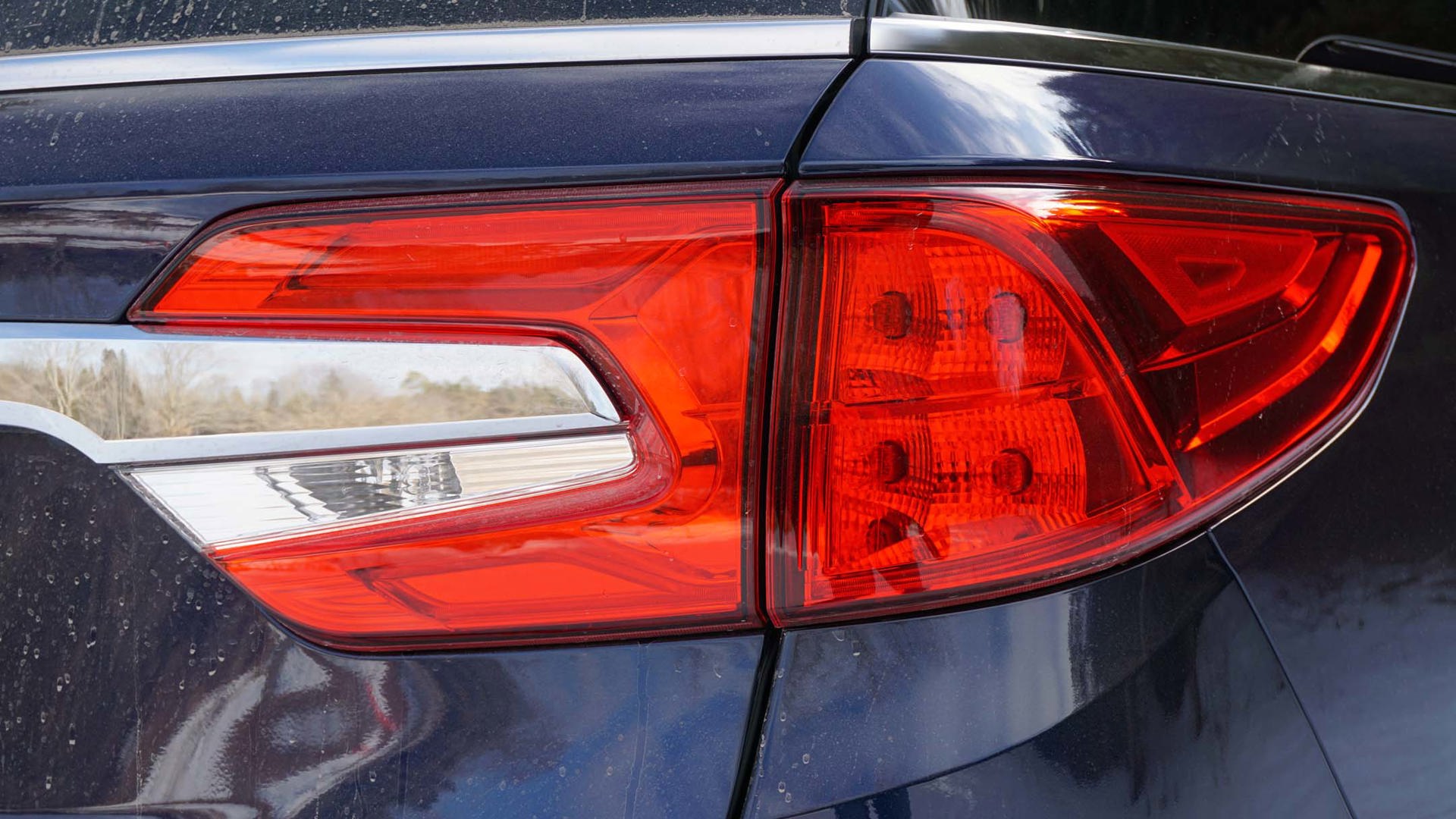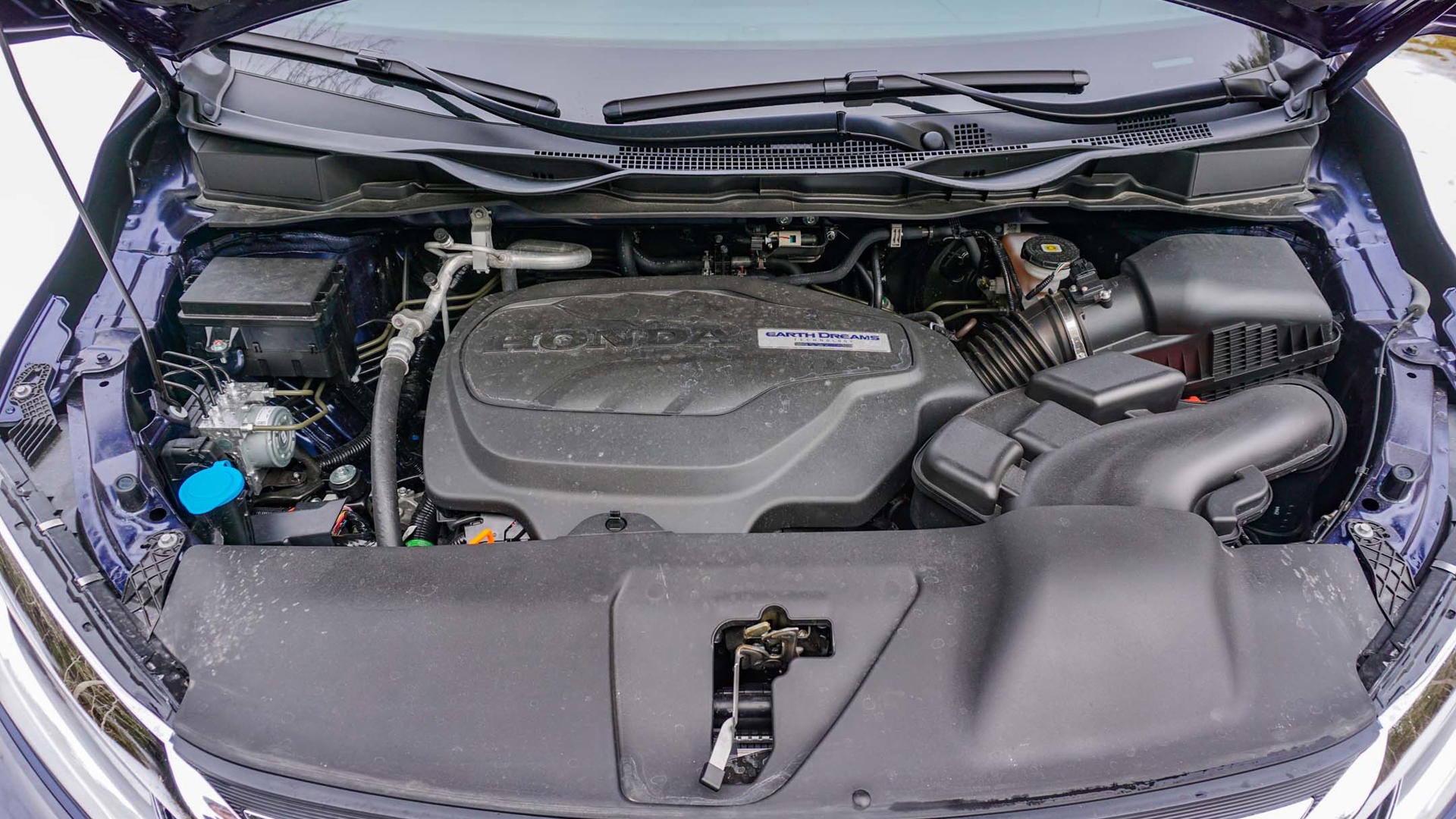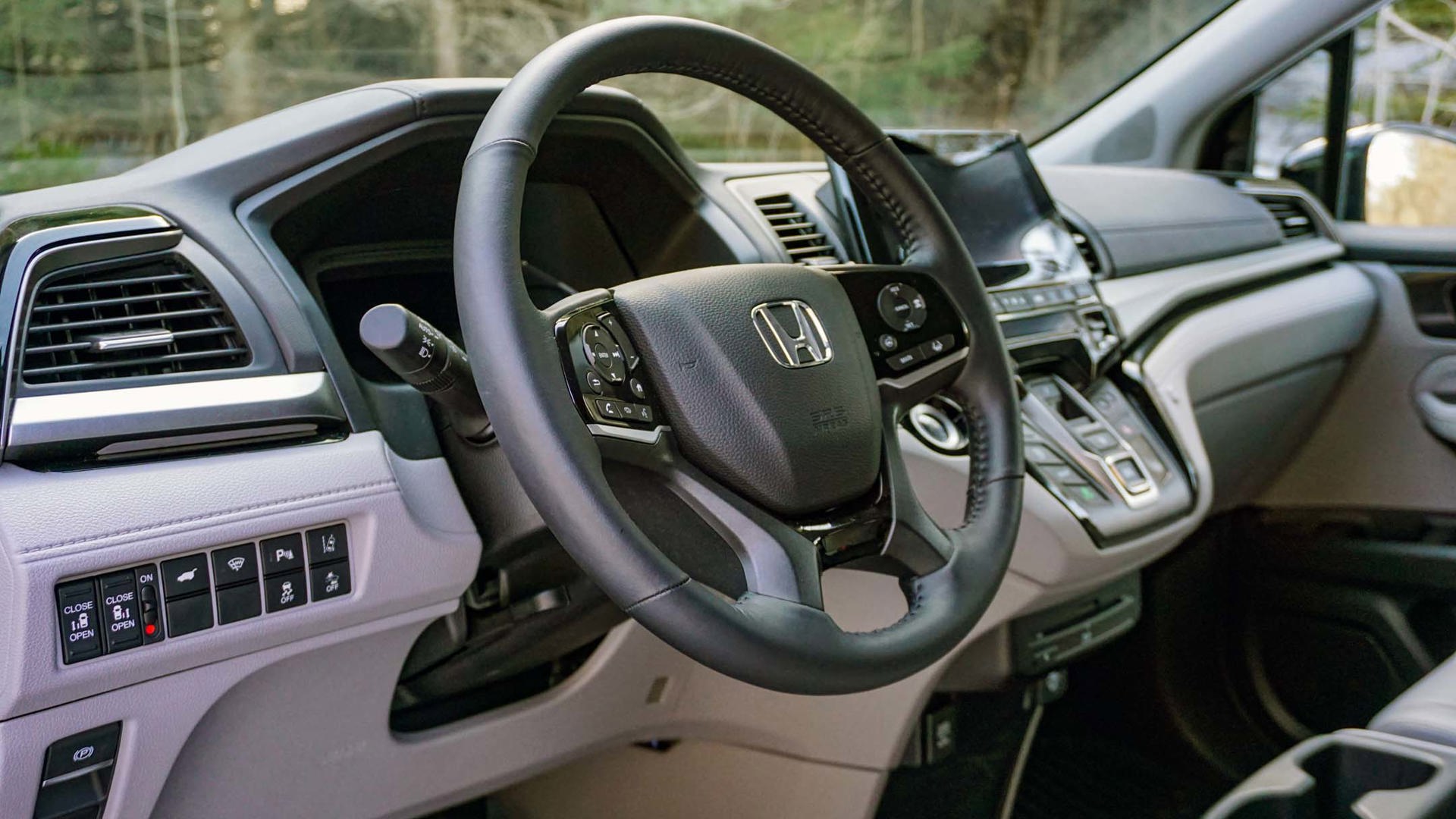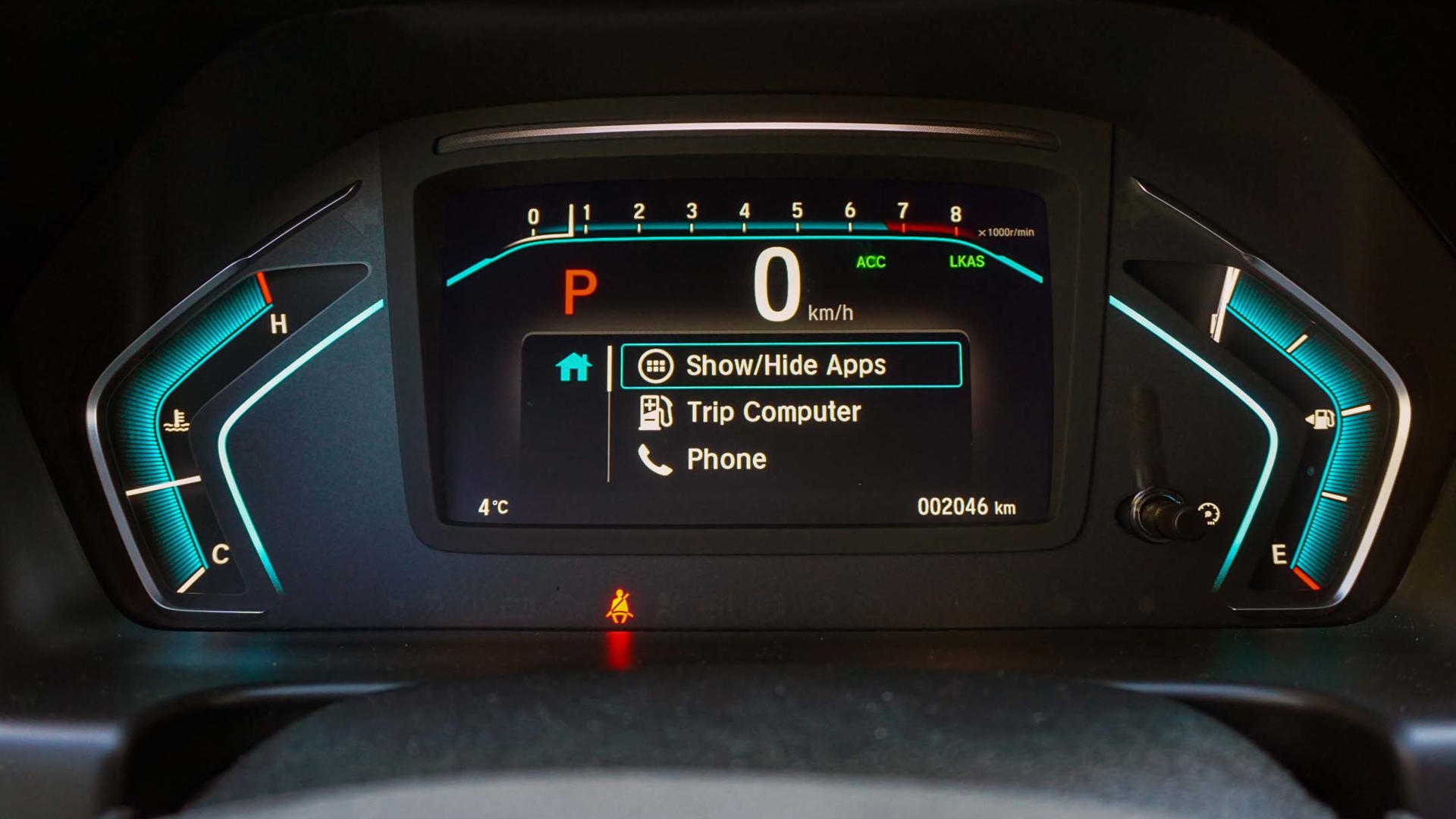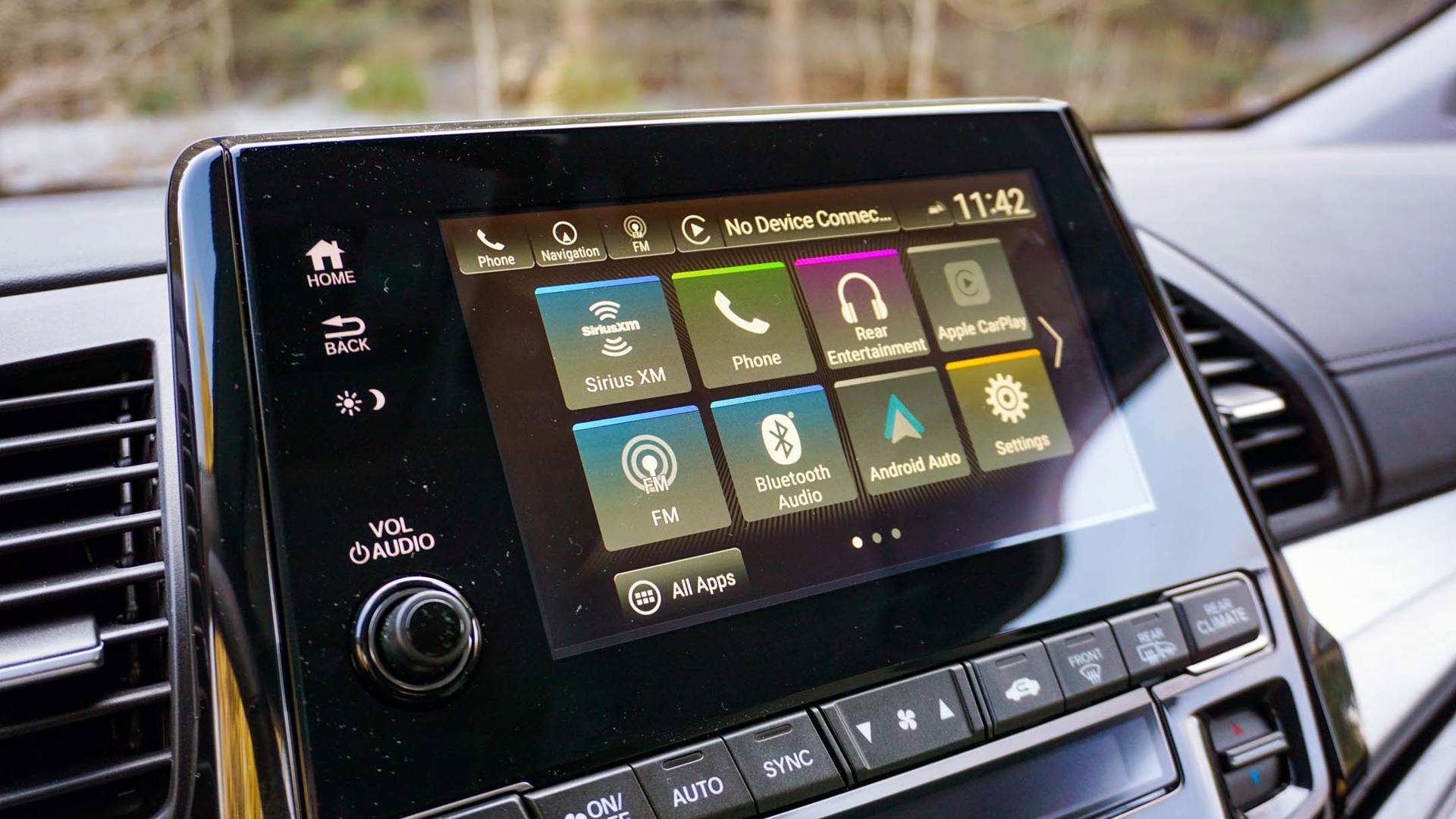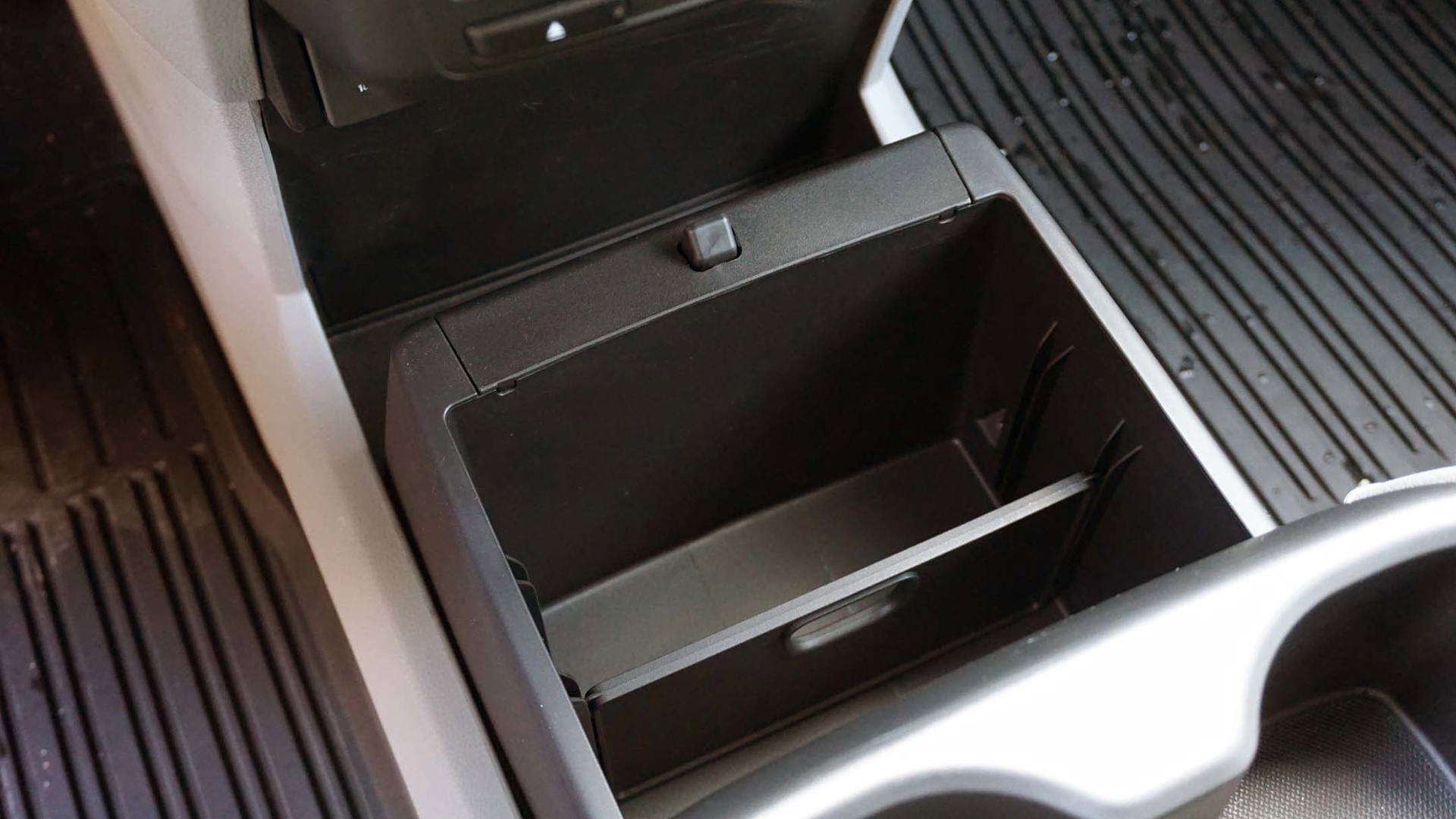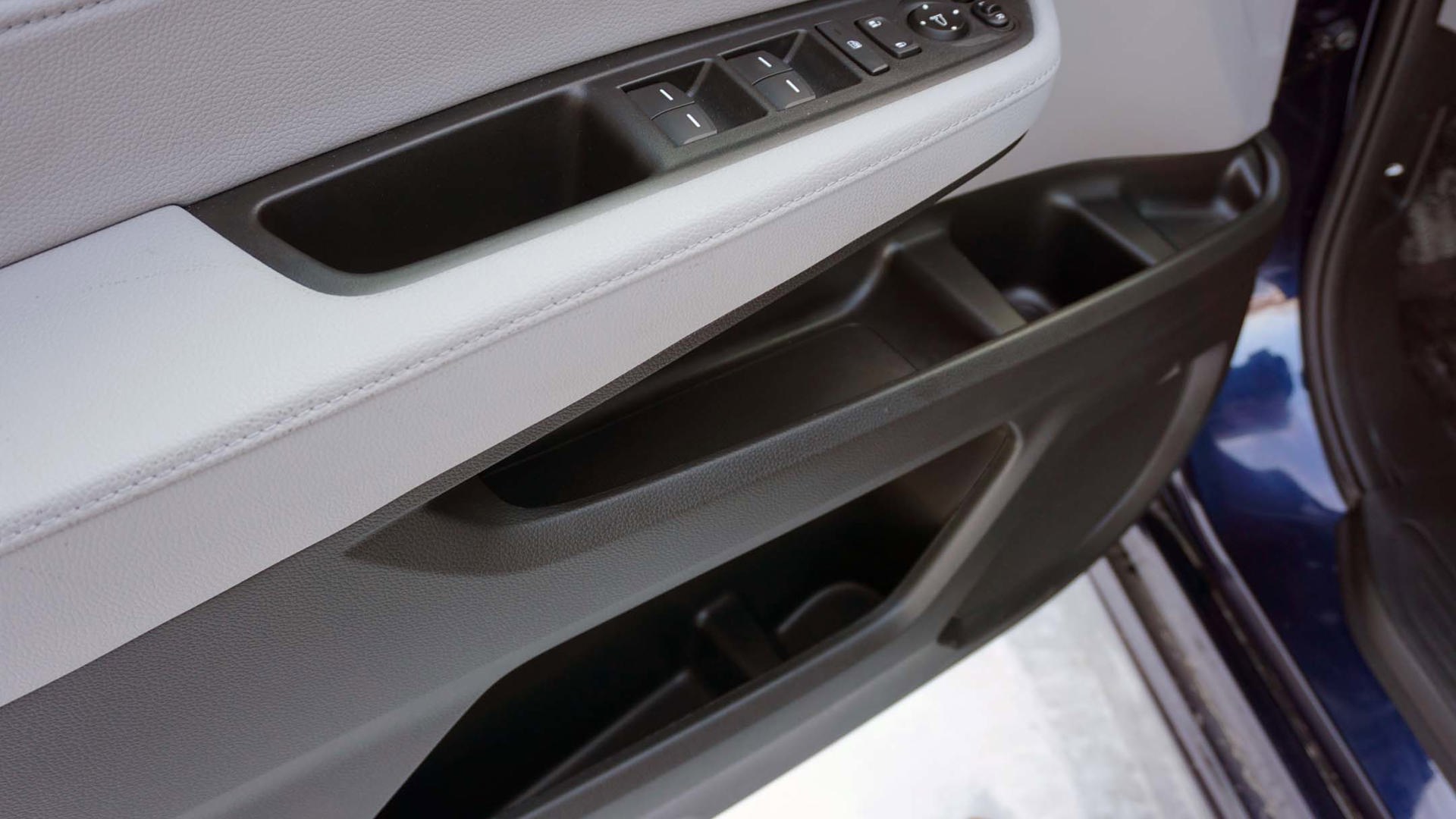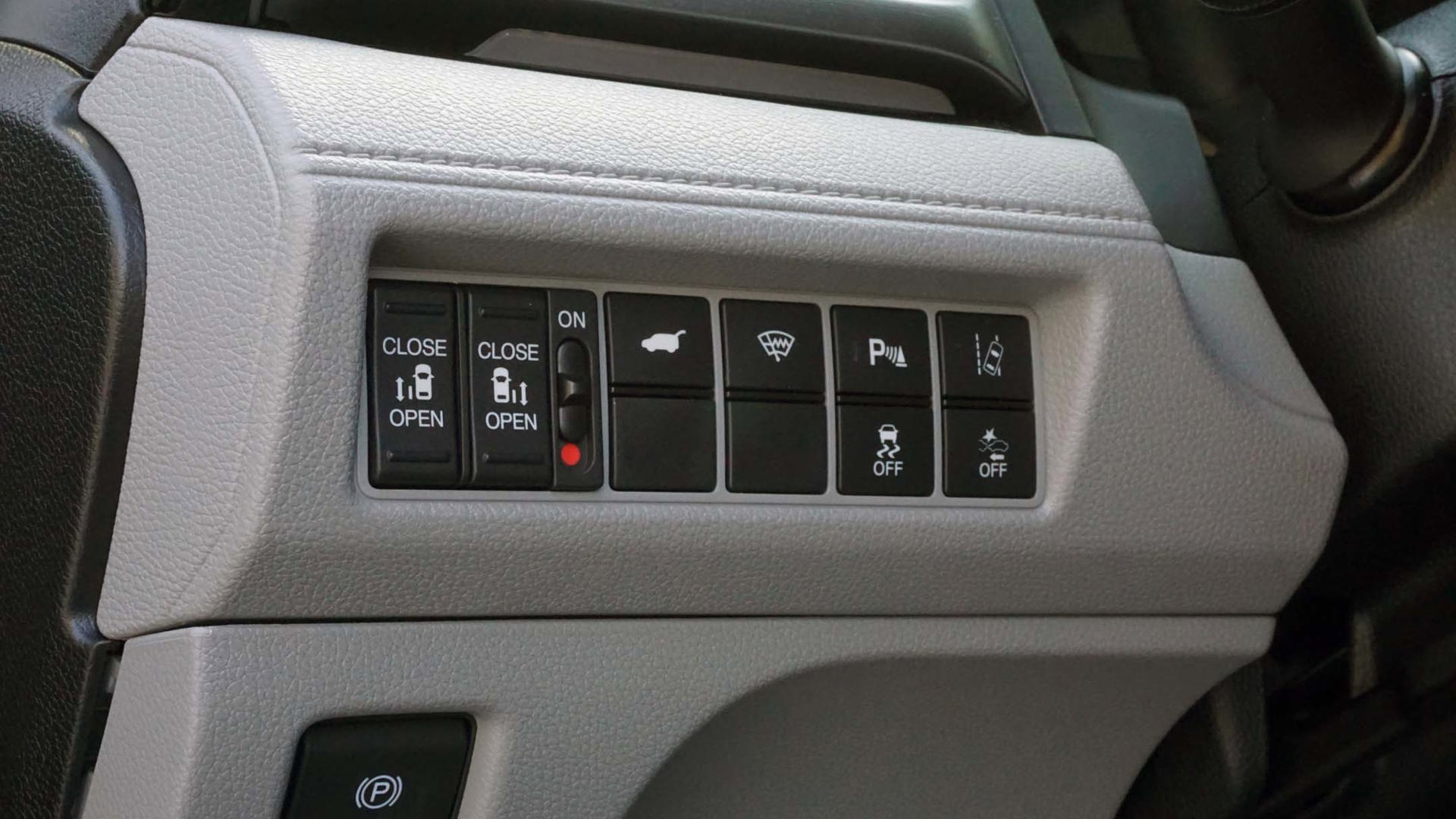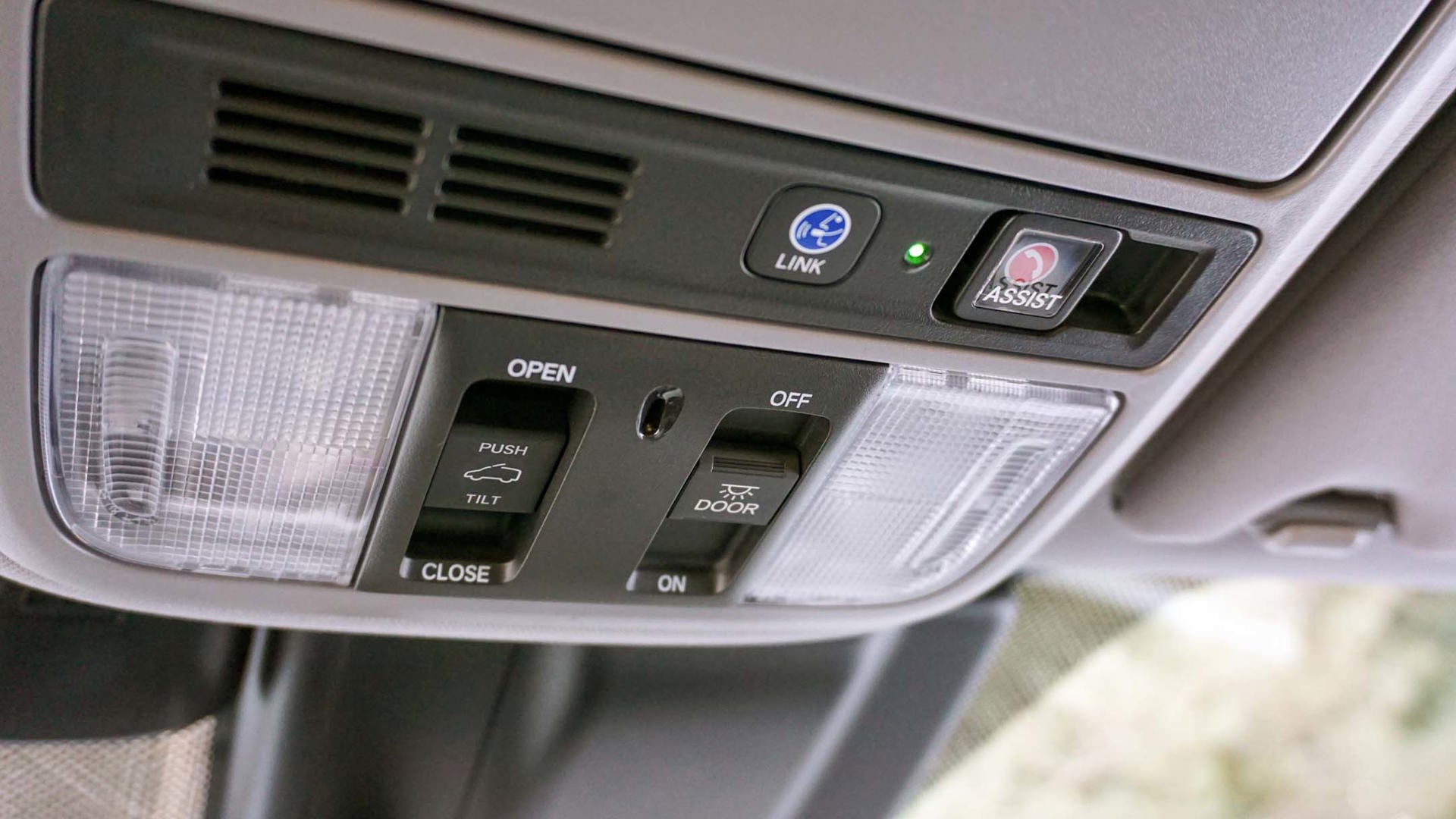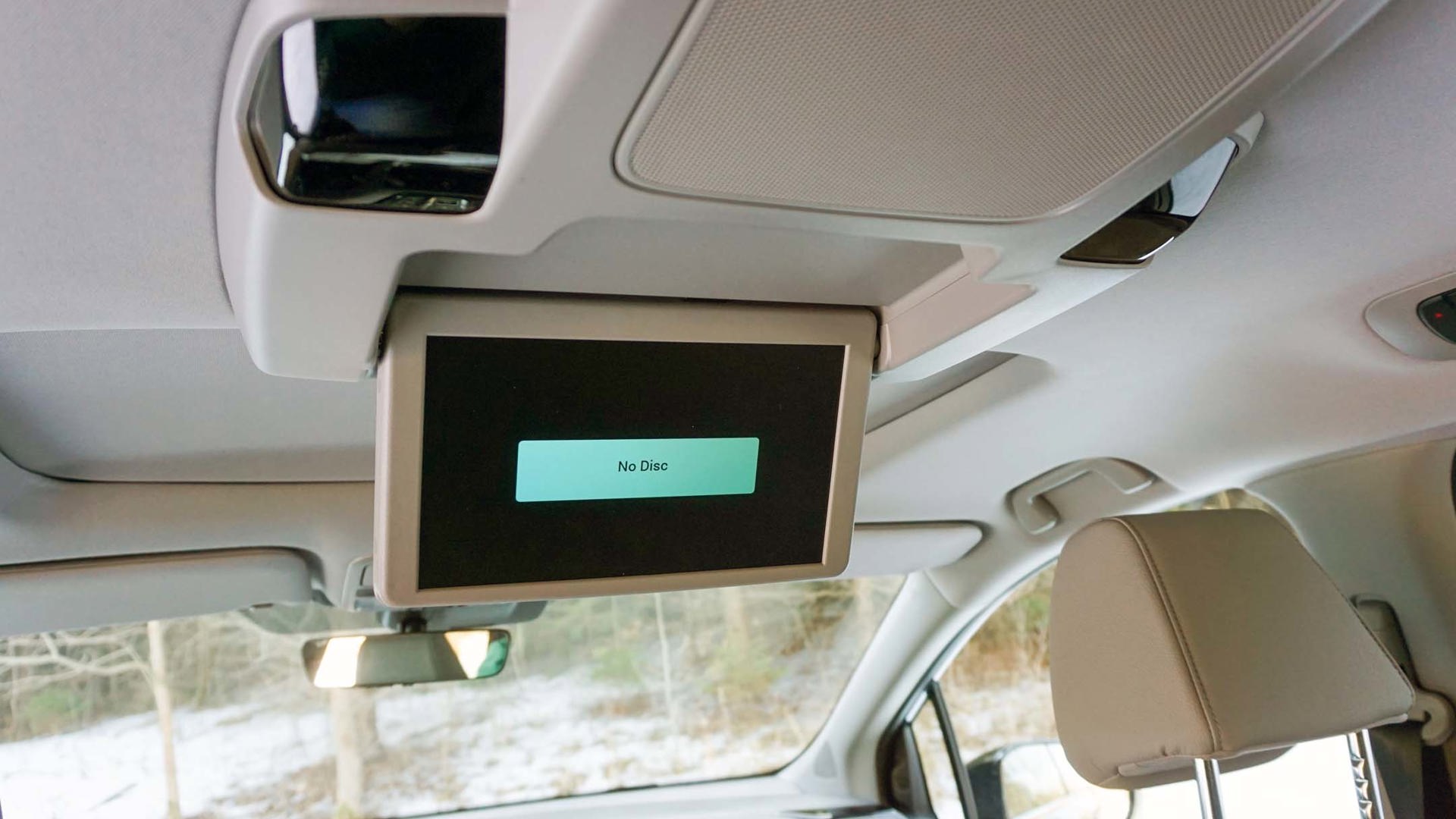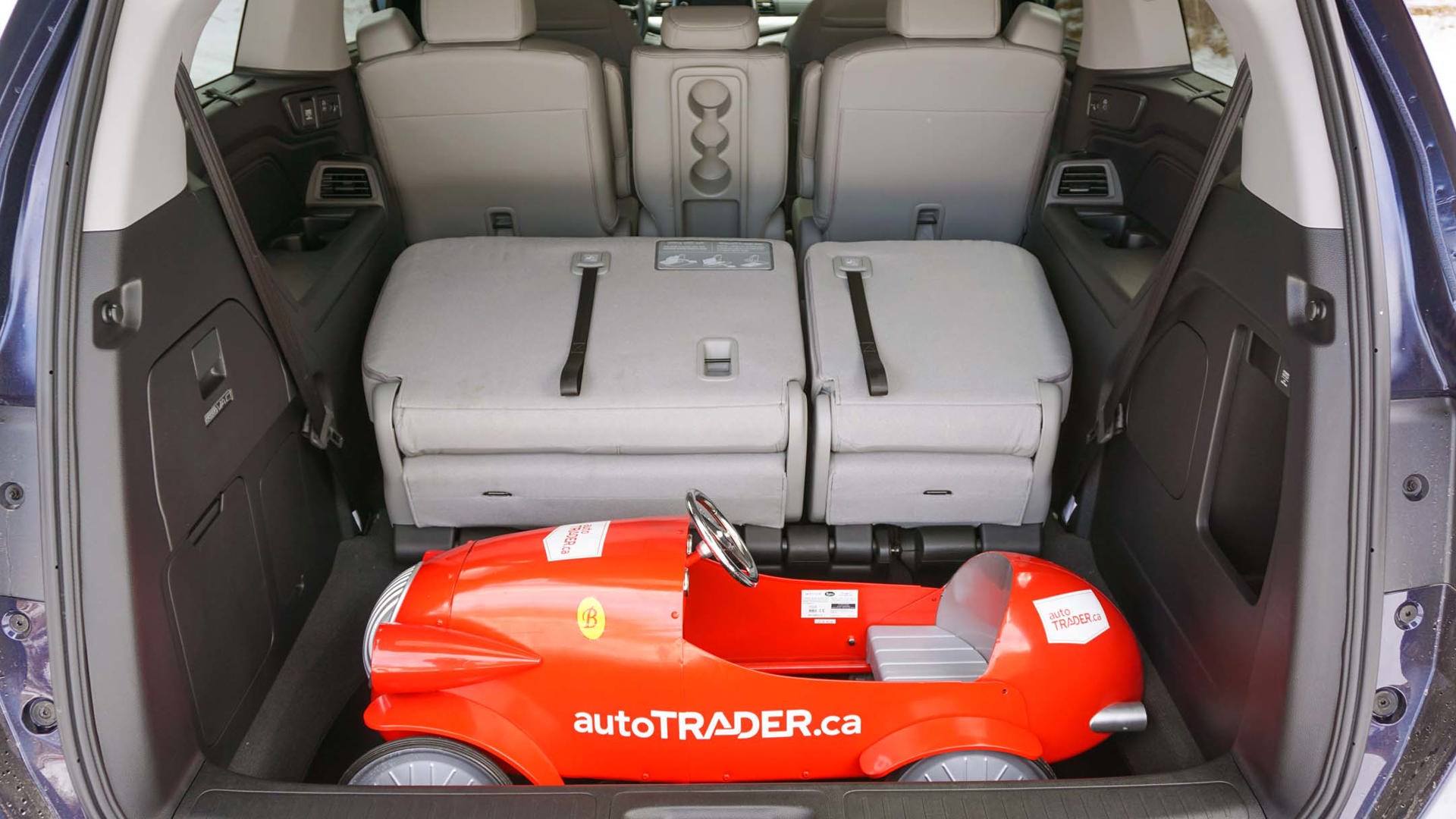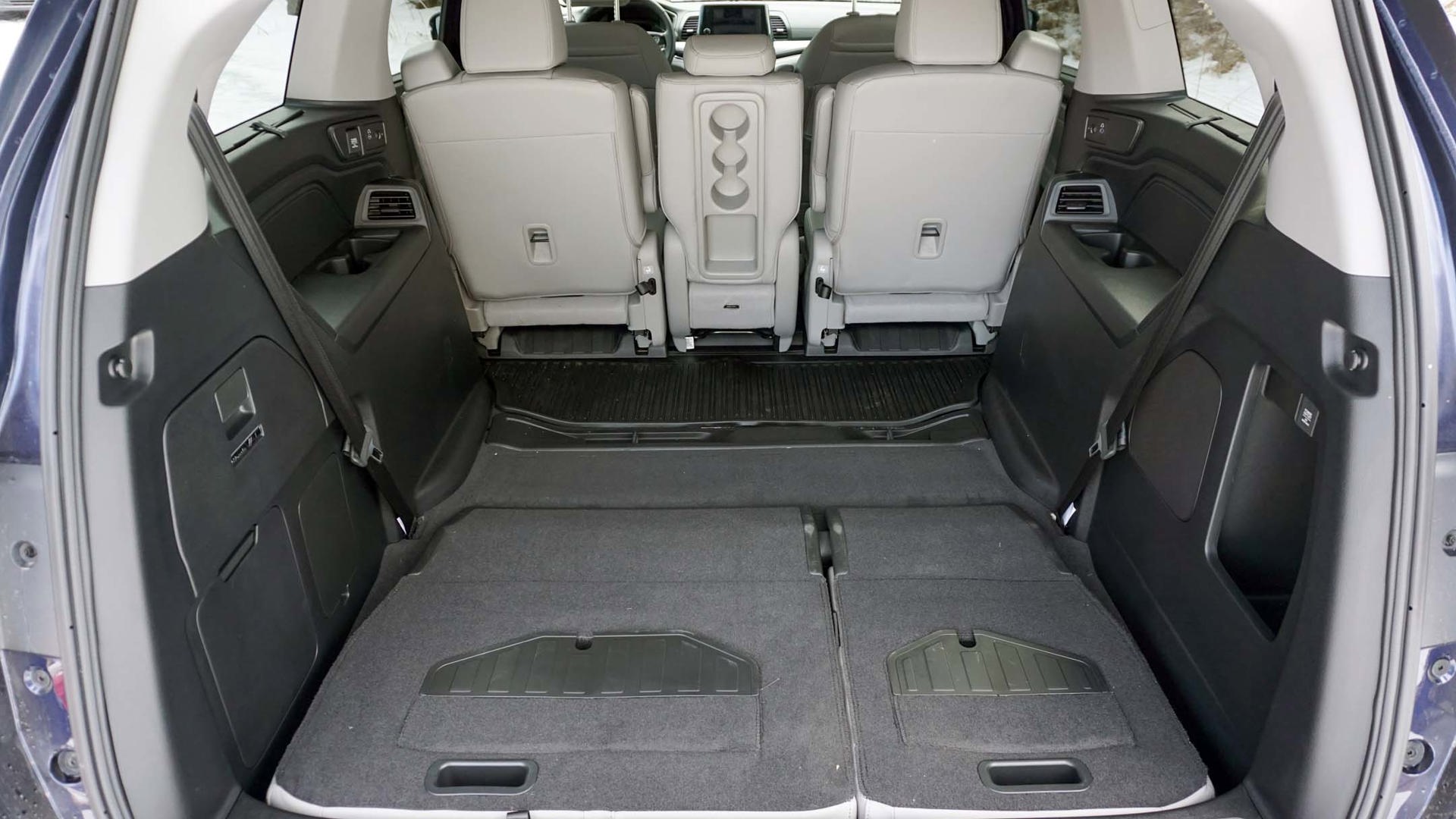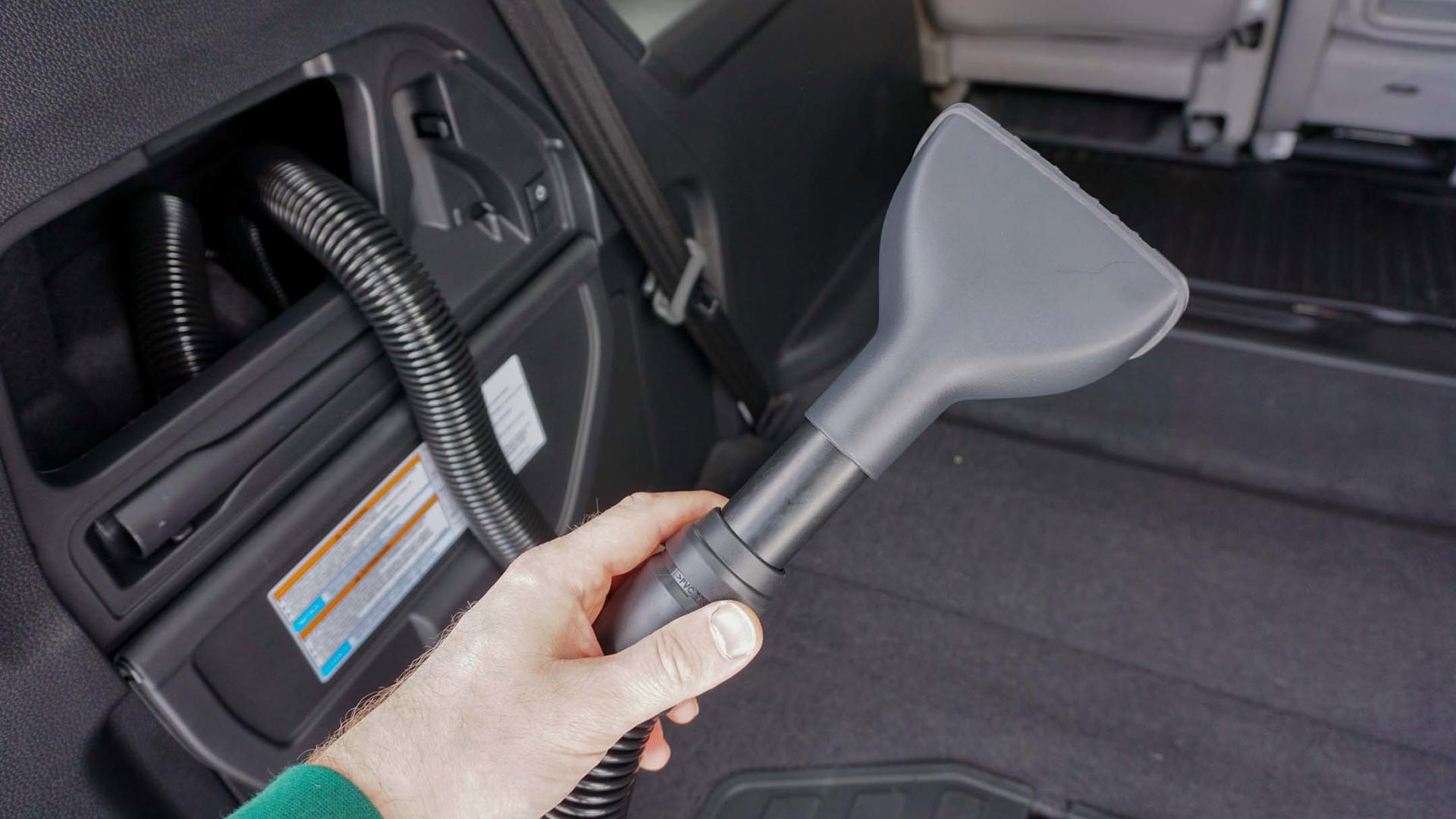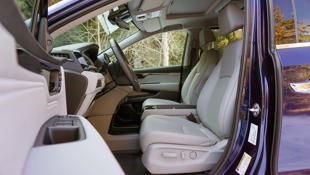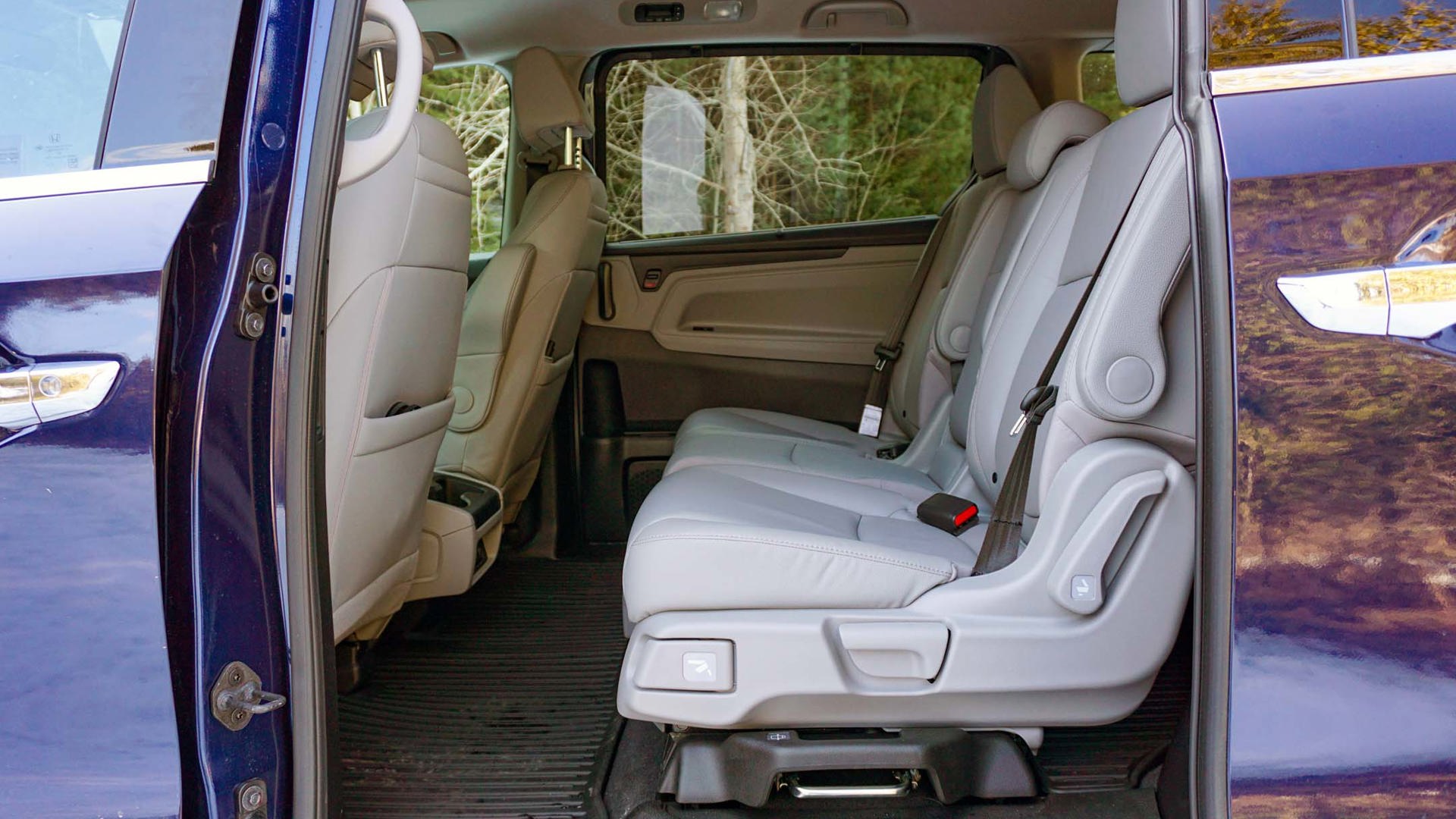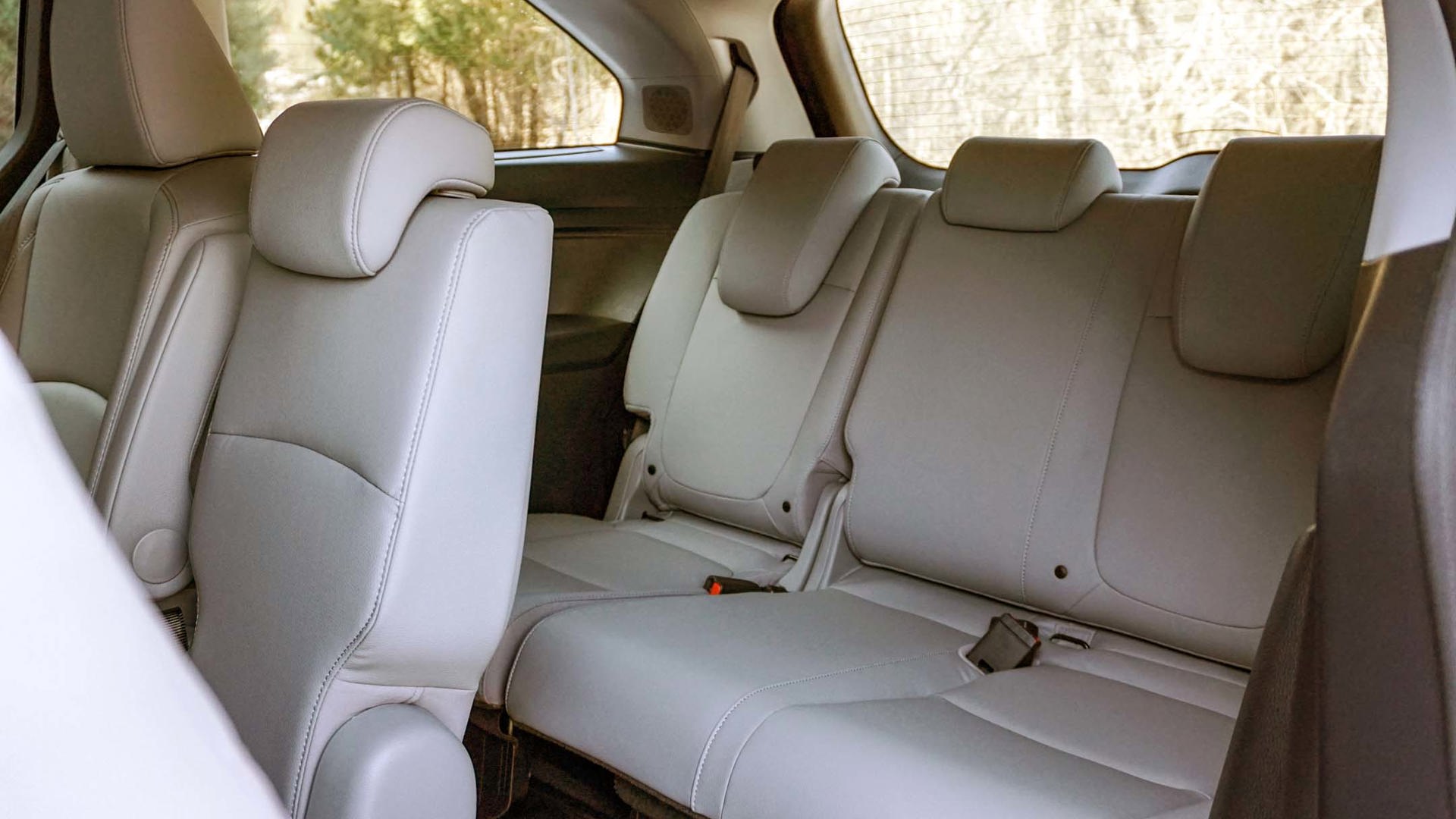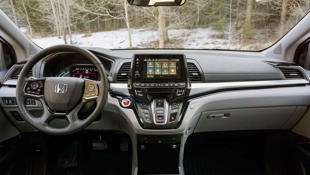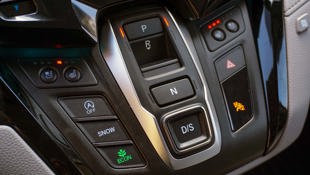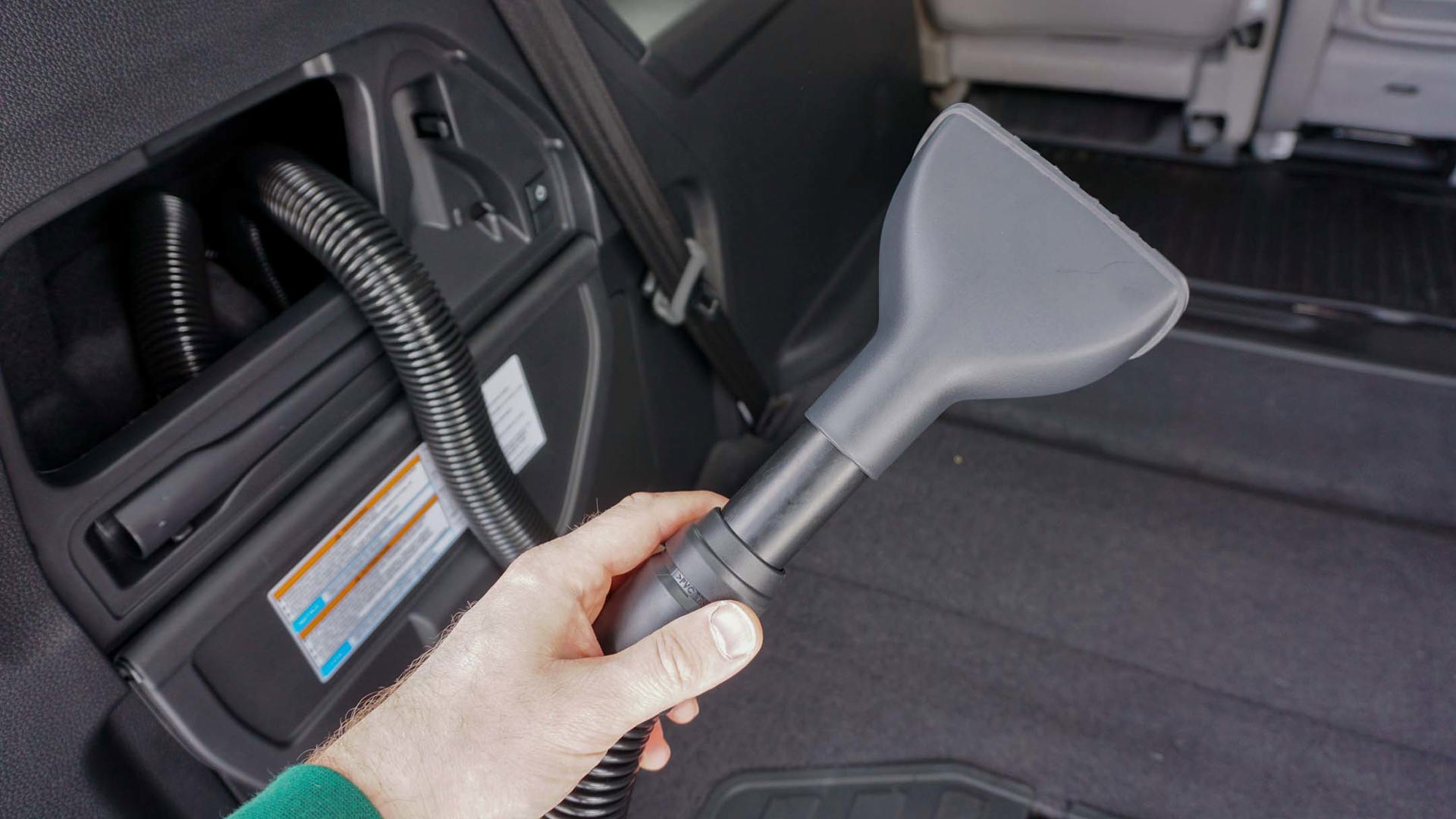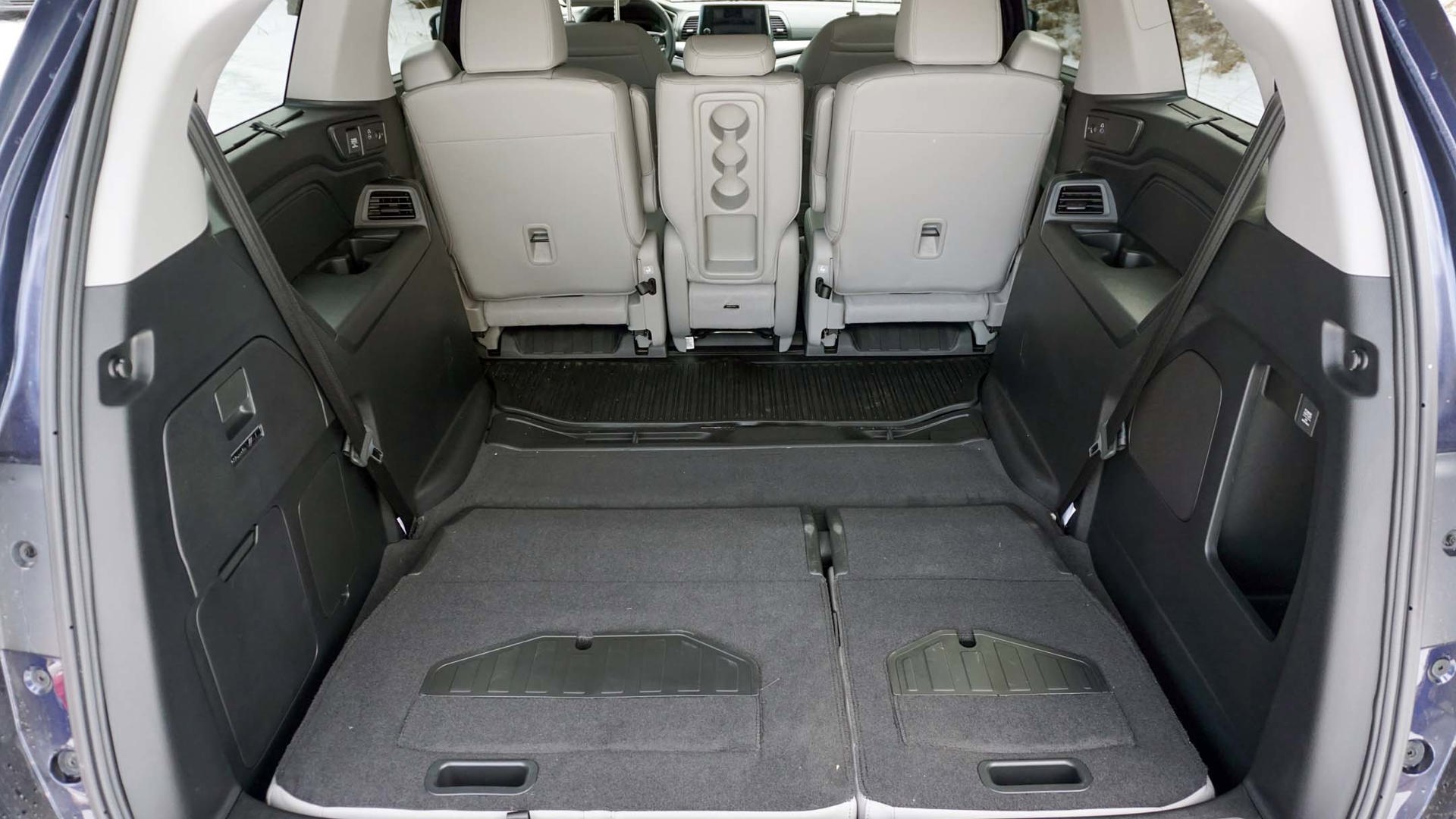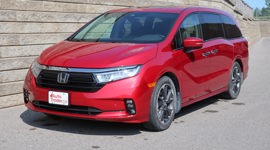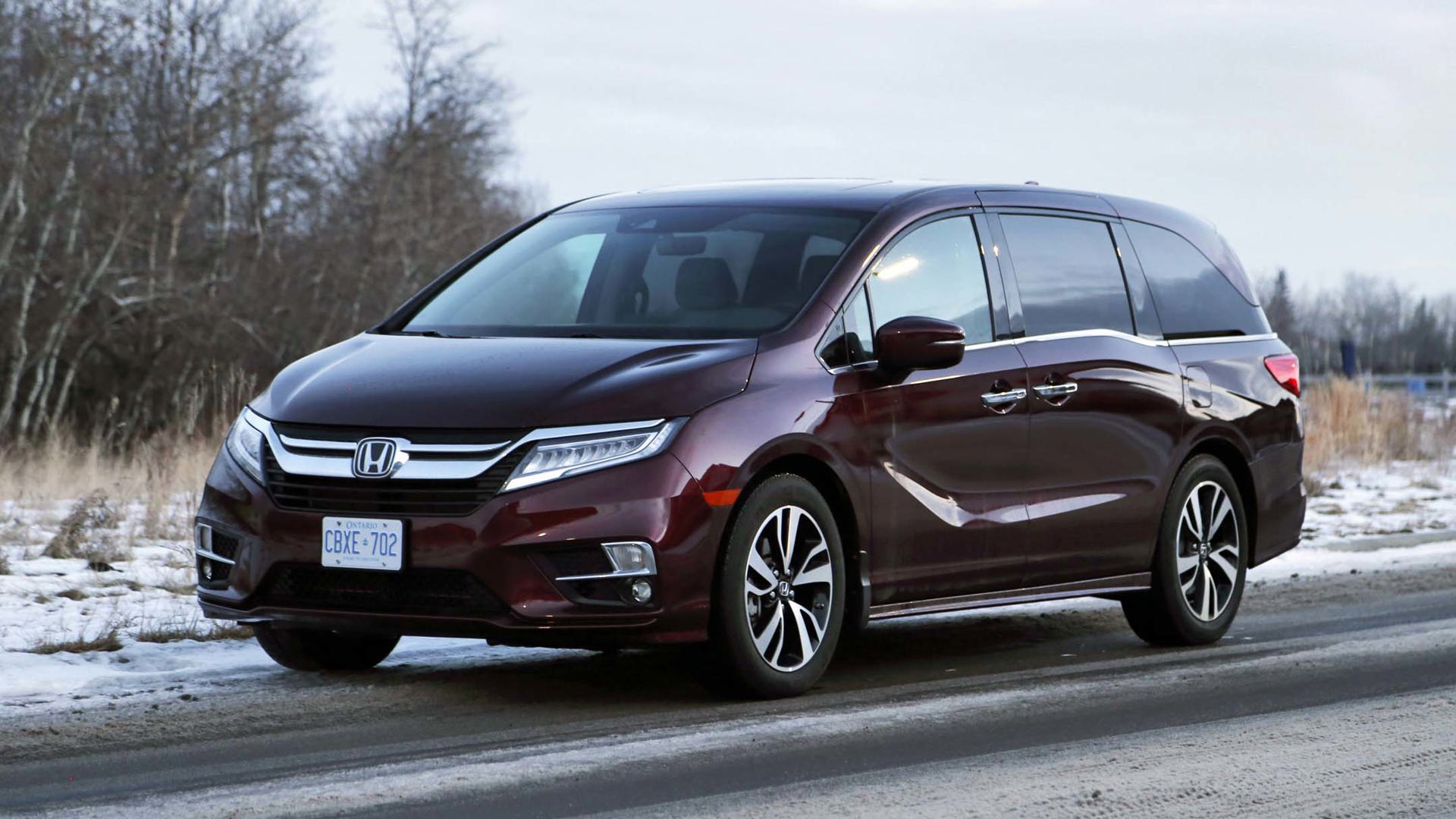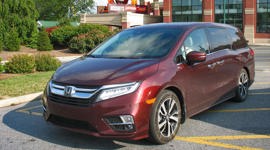 AutoTrader SCORE
AutoTrader SCORE
-
STYLING8/10
-
Safety9/10
-
PRACTICALITY10/10
-
USER-FRIENDLINESS9/10
-
FEATURES9/10
-
POWER9/10
-
COMFORT8/10
-
DRIVING FEEL8/10
-
FUEL ECONOMY7/10
-
VALUE8/10
If you’re reading this, it’s probably because you’re in the market for a minivan, and for that, I salute you.
There aren’t many of you left – of the nearly two million new vehicles sold in Canada last year, only about 60,000 of them were minivans – but to the victor belong the spoils, as the saying goes. In this case, the spoils happen to be the 2020 Honda Odyssey Touring, the fully loaded version of the brand’s best product currently on sale in Canada.
Styling: 8/10
Minivans used to be ugly. They’re not anymore, and the Odyssey is a prime example of how form meets function in this dwindling segment. While the fascia could use some work – and, indeed, it’s getting some by virtue of a facelift for 2021 – the Odyssey makes the most of its dimensions with stylish bodylines that are highlighted nicely by the Obsidian Blue Pearl paint of the tester shown.
Inside, a nice mix of shapes and materials makes the most of the space, with an understated grey upholstery, dash, and door panels keeping the cabin light and bright.
Practicality: 10/10
This is an area the Odyssey really shines. Beyond its outstanding flexibility when it comes to carrying cargo and people – or a combination of both – the Odyssey isn’t just the most cavernous vehicle in Honda’s lineup, but it’s one of the roomiest vehicles on the market in general.
To get the kind of cargo space the Odyssey offers in an SUV, you’ll need to step up to a behemoth like the Ford Expedition Max – and even that comes up short. With the rearmost row upright, there’s 929 L behind the hatch, which is nearly double the typical three-row SUV in the same configuration (though slightly less than the Expedition Max). Better still, the liftover height is incredibly low and the cargo floor features a deep well that will keep grocery bags upright.
Stowing the third row results in 2,452 L of cargo room spread over a completely flat area, or about a small sedan trunk more than the biggest Expedition on the market. While the second-row seats don’t fold into the floor, removing them from the Touring trim yields 3,973 L of total volume (other Odyssey models get a bit more room), eclipsing the big Ford by more than 500 L.
The Odyssey’s cabin is also loaded with creative cubbies and shelves for optimal storage. The centre console sits deceptively low between the front seats, but it features a massive storage bin, a handy hidden drawer, and a quartet of cupholders for first- and second-row occupants. The loaded Touring trim adds a wireless charging pad on top that’s rubberized to keep devices from sliding around on the go.
Now for the basics: Every Odyssey trim features eight-passenger seating, but the centre seat in the second row can be easily removed to create captain’s chairs. Tipping either outboard seat forward provides access to the third row that, unlike in most three-row SUVs, is actually comfortable. While fitting three adults across the split-folding bench would pose its share of challenges, two broad-shouldered grownups are left with plenty of space.
User Friendliness: 9/10
Beyond providing all sorts of space for your family and its stuff, the Odyssey is designed to make the most of it – and make it easy to use. Rather than climbing up into an SUV or dropping down into a sedan or wagon, the Odyssey’s wide doors and low step-in height allow people of all shapes and sizes to slide inside with ease. It may lack the ground clearance of an SUV – 148 mm compared to the Honda Pilot’s 185 mm – but that means accessing the cabin is manageable for passengers of most ages and abilities.
Reconfiguring the Odyssey’s interior takes minimal effort, with straps on the third-row seatbacks allowing for one-handed stowing, and three different handles to tilt the second-row seats forward. Removing those second-row outboard seats poses something of a challenge, though it is manageable, and the centre seat can be pulled out quickly when necessary.
Taking command of such a large people-mover – the Odyssey stretches 5,161 mm from bumper to bumper, or 170 mm longer than the Pilot – requires little adjustment, with great outward visibility and a simple layout of most controls. Need to access a feature from the driver’s seat? There’s probably a button for that. Unfortunately, that includes the transmission, which features buttons in place of a conventional gear selector.
The Odyssey’s infotainment system was also the source of major disappointment during evaluation, failing on multiple occasions – and in multiple ways. First, it inexplicably went dark the day after filming the video review found above (Murphy’s Law and all that); a hard reset while driving temporarily disabled the digital gauge cluster, too. Next, a sporadic, ear-piercing static began emanating from the speakers regardless of whether audio was on or off. And finally, the system stopped recognizing audio sources – no Apple Music, nor conventional or satellite radio.
The inoperable screen issue, which rendered the rear-view camera inoperable, was the subject of a class-action lawsuit filed in the United States last year. What’s more, autoTRADER.ca contributor Jeff Wilson recently experienced a similar issue while testing the 2020 Honda Passport, which uses the same eight-inch touchscreen and infotainment interface found in the Odyssey.
[Editor's Note: If you have time, we suggest checking out this article on why automotive journalists don't usually mention reliability in their car reviews.]
Features: 9/10
Despite efforts to find the kitchen sink, it doesn’t look like Honda included one in the Odyssey. However, everything up to that point is available – even an onboard vacuum. Few features are exclusive to the top Touring trim, so stuff like power-sliding doors, that built-in vacuum, and tri-zone automatic climate control are included from the second trim and up.
Standard equipment includes advanced safety stuff like adaptive cruise control, lane-keep assist, forward automatic emergency braking and automatic high-beams, while connectivity features like Apple CarPlay and Android Auto are included, as are heated front seats, push-button start, and doors that lock automatically once the vehicle is turned off and the key fob is 2.5 metres away.
Moving into higher trims brings expected features like leather seating, a heated steering wheel, and a rear-seat entertainment system, though heated second-row seats aren’t offered despite their availability in the Chrysler Pacifica. The top-of-the-line Odyssey Touring, meanwhile, gets all that plus a Wi-Fi hotspot, wireless phone charger, a camera-based rear seat monitor, an 11-speaker stereo, and ventilated front seats.
Safety: 9/10
Beyond its standard and available safety features, the Odyssey performed well in crash testing conducted by the Insurance Institute for Highway Safety (IIHS), earning a Top Safety Pick as a result. Ultimately, it was the Odyssey’s headlights that held it back from being awarded the highest honour from the IIHS, with ratings ranging from poor to acceptable, depending on trim.
Comfort: 8.5/10
As great as the Accord is, Honda’s flagship sedan rides on the rigid side. In fact, in a recent comparison between the 2020 Accord and Subaru Legacy, ride quality was the only real knock against the Honda. The Odyssey rides exactly how the Accord should, a benefit of its superb suspension damping and additional mass. Nary a bump unsettles the 2,086-kg family hauler, yet there’s a nimbleness to the way it drives that belies its curb weight.
The leather-adorned seats in the Touring version tested here proved comfortable and supportive, though they become progressively less so with each passing row. Yet a vanload of auto writers found little to complain about while cruising around on a Saturday afternoon, with even those forced into the farthest seats finding enough to like. The climate control system is also worthy of praise, proving powerful enough to warm the entire cabin without working overtime to do so.
Driving Feel: 8/10
Leave any expectations about how you think the Odyssey handles at the power-sliding door, because it’s a pleasant surprise to drive. Of course, there’s some top-heaviness thanks to all the glass and sheet metal it’s made of, but the Odyssey is an impressively refined and relaxed vehicle to operate.
Similar to its suspension that’s well-damped and outdoes the Accord in that regard, so too does the Odyssey’s steering. Well-weighted without feeling unnecessarily heavy, the electric power steering is exceptionally unexceptional – exactly the way it should be in a vehicle like this. Easy to manoeuvre, the Odyssey never feels as big as it is and boasts a turning circle that’s significantly smaller than that of the Chrysler Pacifica or Toyota Sienna (6.05 m versus 12.1 m and 11.4 m, respectively).
Power: 9/10
Also helping the Odyssey in its quest to feel like the anti-minivan is its drivetrain, which offers impressive passing power. The same 3.5L V6 found in the Ridgeline pickup and Passport and Pilot SUVs is found in the Odyssey, generating 280 hp and 262 lb-ft of torque. While that’s about the same as the Sienna and non-hybrid Pacifica, the naturally aspirated unit in the Odyssey benefits from Honda’s i-VTEC variable valve timing to provide smile-inducing acceleration even at highway speeds.
The transmission it’s paired to, a 10-speed automatic, suffered from the occasional jarring or awkward shift during testing, though it generally proved itself capable of knowing which gear to be in and when. Paddle shifters mounted to the steering wheel allow control over gear choices should the driver so choose, which helps make surprisingly quick work of merge lanes.
Unlike the Sienna – and soon the Pacifica, too – the Odyssey isn’t available with all-wheel drive, relying on its front wheels alone for traction. While that may take it off some Canadians’ shopping lists, it shouldn’t come off of yours. Slap a good set of winter tires on the Odyssey – which Honda Canada graciously did in the case of the tester seen here – and its drive configuration becomes an afterthought. Well, until you get a little overzealous with the accelerator pedal and spin the tires off the line….
Fuel Economy: 7/10
Tipping the scales at such a heavy curb weight – the Odyssey Touring weighs in at 2,086 kg compared to 2,032 kg for the same trim of the all-wheel-drive Pilot – means fuel consumption isn’t one of the Odyssey’s strengths.
Natural Resources Canada (NRCan) rates the 2020 Odyssey at 12.2 L/100 km in the city, 8.5 on the highway, and 10.6 combined. The non-hybrid Pacifica is good for 12.4/8.4/10.6 L/100 km city/highway/combined, while the all-wheel drive Sienna will suck back 13.6 L/100 km around town, 9.6 on the highway, and 11.7 combined.
A week with the Odyssey covering exactly 500 km resulted in a real-world average of 11.5 L/100 km – a number that’s not great in the grand scheme but reasonable for the conditions.
Value: 8/10
The 2020 Odyssey starts at $36,290 before fright and fees, with six trims in total to choose from on its way to a $52,390 MSRP for the Touring model tested. Tacking on freight and A/C tax resulted in an as-tested price of $54,305, which is a few thousand dollars more than an older, similarly equipped Sienna, but slightly less than a loaded Pacifica.
Considering all that’s included for the price, there’s a compelling case to be made for the Odyssey’s value proposition – especially compared to less-practical three-row SUVs like the Pilot.
The Verdict
A lot of folks out there might find minivans inherently uncool, but if you’ve made it this far into this review, you’re probably not one of them. Image may be important, but so too is getting the most for your money. For buyers out there who aren’t as concerned with what other people think of them as they are with what they actually need in a family hauler, the 2020 Honda Odyssey has some serious appeal.
Ultimately, all that’s holding it back from a buy-it-now endorsement is the infotainment system that performed so miserably during testing. That these issues have entered their third model year without resolution should be a concern for potential buyers.
| Engine Displacement | 3.5L |
|---|---|
| Engine Cylinders | V6 |
| Peak Horsepower | 280 hp @ 6,000 rpm |
| Peak Torque | 262 lb-ft @ 4,700 rpm |
| Fuel Economy | 12.2/8.5/10.6 L/100 km cty/hwy/cmb |
| Cargo Space | 929/2,452/3,973 L behind 3rd/2nd/1st row |
| Model Tested | 2020 Honda Odyssey Touring |
| Base Price | $52,390 |
| A/C Tax | $100 |
| Destination Fee | $1,815 |
| Price as Tested | $54,305 |
|
Optional Equipment
None
|
|
